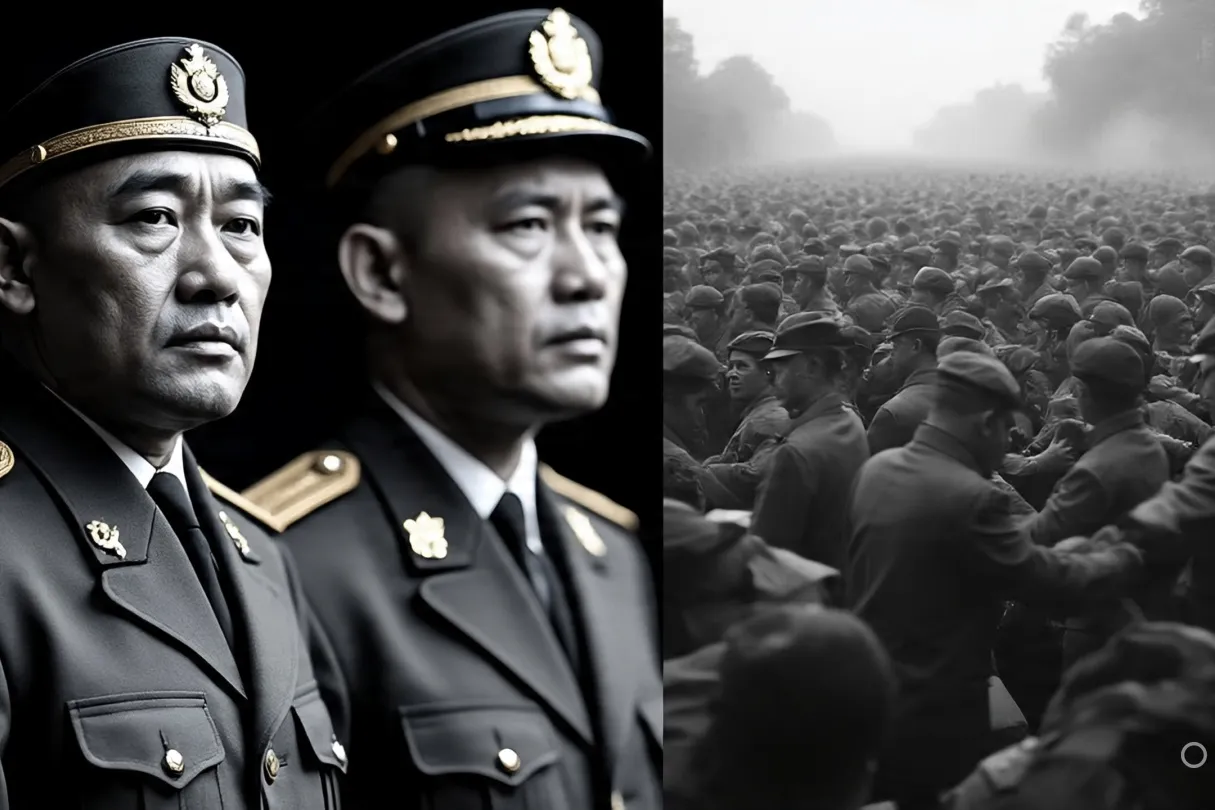🏦 How 1MDB Was Born
In 2009, Malaysia’s then-Prime Minister Najib Razak launched 1Malaysia Development Berhad (1MDB), a sovereign wealth fund supposedly designed to spur economic development and attract foreign investment. Publicly marketed as a patriotic financial initiative, 1MDB quickly became a vehicle for large-scale international financial dealings—much of it shrouded in secrecy and later, scandal.
- 🏦 How 1MDB Was Born
- 🌍 From Malaysian Corruption to Global Financial Crime
- 🕵️♂️ The Theory: A Smokescreen for Something Bigger?
- 📁 Whistleblower Leaks and Investigative Bombshells
- 💸 Where Did the Money Really Go?
- 🏛️ Goldman Sachs and the Price of Enabling
- 🎭 The Role of Hollywood and Cultural Distraction
- 🔐 Is 1MDB a One-Off or a Glimpse Into the Machine?
- 📡 What the Theory Reveals About Power and Secrecy
- 🗞️ Media’s Role in Accountability
- 🧠 What We’re Left With
Backed by state guarantees and international banks, 1MDB raised billions through bond sales underwritten by major institutions like Goldman Sachs. Initially, funds were earmarked for energy projects, tourism, and strategic investments. But internal audits and whistleblower reports soon raised red flags: money was missing, unaccounted for, or transferred to unknown entities.
That was just the beginning. What followed was a global cascade of financial leaks, court cases, media exposés, and international outrage. The 1MDB scandal had officially gone international.
🌍 From Malaysian Corruption to Global Financial Crime
The scale of the scandal exploded when investigative journalists and whistleblowers began tracing the funds. Authorities in the U.S., Switzerland, Singapore, and Hong Kong launched parallel investigations, revealing that over $4.5 billion was allegedly siphoned from 1MDB between 2009 and 2015.
Much of this money allegedly flowed through a network of shell companies and private accounts, ultimately financing:
- 🏰 Lavish real estate in New York, Beverly Hills, and London
- 🎬 Hollywood productions, including “The Wolf of Wall Street”
- 🛥️ A $250 million yacht and a $35 million private jet
- 🎨 Artworks by Monet, Van Gogh, and Basquiat
Key to these financial gymnastics was financier Jho Low, a flamboyant Malaysian businessman with global connections. Low is believed to have orchestrated the movement of funds, exploiting gaps in regulatory oversight across jurisdictions.
While Najib Razak denied wrongdoing, investigations revealed that nearly $700 million ended up in his personal bank account. He claimed it was a donation from the Saudi royal family, but forensic analysis told a different story.
🕵️♂️ The Theory: A Smokescreen for Something Bigger?
Some conspiracy theorists argue the 1MDB scandal isn’t just a tale of excess and embezzlement—it’s a window into a deeper global apparatus.
According to this theory, the stolen billions weren’t just for personal gain. Instead, they were funneled into:
- 🛰️ Covert funding for intelligence operations in Southeast Asia
- 🗳️ Financing of political campaigns in other countries
- 📈 Strategic investments in media and tech to shape public opinion
- 🛡️ Black budget operations tied to foreign governments
The argument is simple: sums this large don’t move freely without being noticed. And when they do, someone powerful benefits.
📁 Whistleblower Leaks and Investigative Bombshells
One of the major catalysts of the international investigation was Clare Rewcastle Brown, founder of Sarawak Report. Along with The Edge Malaysia, her reporting exposed the tangled web of transactions and state-backed denials.
Notably, the U.S. Department of Justice (DOJ) filed the largest kleptocracy case in American history, seizing hundreds of millions in assets linked to 1MDB. These included:
- Properties in Manhattan and Los Angeles
- Royalties from “The Wolf of Wall Street”
- Art and jewelry purchased with 1MDB funds
Court filings, bank records, and whistleblower testimonies created a paper trail so extensive, it challenged the credibility of not just Najib but also global institutions that enabled the flow of money.
💸 Where Did the Money Really Go?
Here’s a breakdown of how some observers believe the funds were distributed:
| Destination | Purpose Alleged by Theorists | Supporting Clues |
|---|---|---|
| Private accounts (Najib, Jho Low) | Enrichment, political campaigning | Tracked via SWIFT codes and leaked bank transfers |
| Political donations abroad | Influence operations in other countries | Sudden wealth spikes in campaign finance records |
| Real estate, jets, art | Money laundering and asset storage | DOJ asset seizure records |
| Intelligence fronts in SEA | Funding for spy networks or anti-China efforts | Overlaps with known U.S. black ops footprints |
| Shell companies in tax havens | Disguise for elite or state-level beneficiaries | Panama Papers and leaked Mossack Fonseca documents |
🏛️ Goldman Sachs and the Price of Enabling
U.S. banking giant Goldman Sachs played a key role in raising $6.5 billion for 1MDB through three bond sales. For its services, the bank earned $600 million—a staggering sum for underwriting.
Goldman later claimed it was misled by rogue employees, but skeptics argue this explanation doesn’t hold up given the due diligence typically required for deals of this magnitude.
Eventually, the bank paid over $5 billion in fines and settlements to various governments, while several executives—including Tim Leissner—faced criminal charges.
But for many, the question remains: how could a firm so globally powerful, so deeply enmeshed in compliance, miss the red flags? Or did it choose to look away?
🎭 The Role of Hollywood and Cultural Distraction
Jho Low didn’t just buy yachts and mansions. He bought access—into Hollywood, into elite social circles, and into public perception. He rubbed shoulders with Leonardo DiCaprio, Miranda Kerr, and Paris Hilton.
Some analysts argue this was more than vanity—it was camouflage. By embedding himself in celebrity culture, Low diffused suspicion and distanced his image from dirty money.
The production of “The Wolf of Wall Street,” itself a story about financial corruption, was partly financed with 1MDB funds. The irony was lost on no one.
🔐 Is 1MDB a One-Off or a Glimpse Into the Machine?
Critics say 1MDB is not an isolated scandal but symptomatic of something larger: a global system where state funds, corporate greed, and weak financial oversight intersect.
Institutions like Goldman Sachs, Swiss private banks, and offshore law firms were not passive victims—they were enablers. Their systems allowed billions to flow through checks and balances that should have caught anomalies.
In this light, 1MDB is less of a Malaysian crime and more of a blueprint for how international kleptocracies operate.
📡 What the Theory Reveals About Power and Secrecy
At its core, the 1MDB conspiracy theory reflects the public’s growing sense that the world is run not by governments but by interconnected elites protected by secrecy and legal loopholes.
Why the theory persists:
- 🌐 Scale of fraud stretched across five continents
- 🧩 Involvement of multiple powerful institutions
- 🔍 Inconsistent narratives and delayed legal accountability
- 🧱 Legal settlements without full trials for major players
Even as Najib was eventually convicted in Malaysia and sentenced to 12 years in prison (later controversially pardoned), many believe the real architects and beneficiaries of the scandal remain untouched.
🗞️ Media’s Role in Accountability
From The Wall Street Journal to Al Jazeera to independent Malaysian outlets, media coverage of 1MDB proved essential in sustaining pressure on institutions to act.
But even media has its limits. Complex financial stories are difficult to follow. Legal jargon and international jurisdictions muddy the waters. And media fatigue sets in when coverage stretches over a decade.
Still, without journalism, 1MDB may have remained a national embarrassment rather than a global cautionary tale.
🧠 What We’re Left With
1MDB is both a financial crime and a Rorschach test. For some, it’s proof of elite impunity. For others, it’s evidence of institutional failure. And for conspiracy theorists, it’s just the surface layer of something far deeper.
In a world where billions can disappear without trace, where yachts and condos are bought with stolen national funds, and where whistleblowers often pay a higher price than perpetrators—the 1MDB saga continues to resonate.
Because the real question isn’t just where the money went.
It’s who helped it get there—and why they’re still free.




